
Largest Countries in the World by Area
Are you curious about the largest countries in the world? You’ve come to the right place. We’ll help you explore the largest landmass across the globe. See what’s there that take up the most space.
How Do You Measure a Country’s Size?
Land area, population, and economic performance are some of the factors to consider. Other measures are done through military strength and political influence.
Here are the factors of how a country is measured by size:
- Land Area: The land area of a country includes islands as well, and it’s the total area of its landmass. It’s actually a metric in square kilometers or square miles. In order to make an accurate measurement, all of the country’s land needs to be included, and the disputed territories are included as well.
- Population: When it comes to the population, the important part is the total number of people who live within the borders of countries. It’s a metric that’s measured in millions or billions, typically. For the measurement to be the most up-to-date, it’s vital to use the most current data from reliable sources.
- Gross Domestic Product (GDP): The GDP is a term that describes a country’s total value of all goods and services that are produced inside the borders over a certain period. The metric is given in billions or trillions of dollars. GDP is an important metric as it’s the official data given by the government or international organizations like the World Bank or the International Monetary Fund.
- Military Strength: A country’s military strength shows the ability to defend itself and project its power. This metric includes the number of troops, tanks, planes, and other military assets a country has. The correct measurement includes not just the quantity but also the quality of a country’s military assets.
- Political Influence: A country’s political influence surfaces the country’s ability to shape global events and policies. Some factors go into this metric: a country’s membership in international organizations, a country’s participation in global events, and its diplomatic relations with other countries. When incorporating this metric, the measurement considers the breadth and depth of a country’s political influence.
In conclusion, there are several ways to measure a country’s size, each with its own strengths and weaknesses. By considering multiple metrics and using reliable data sources, you can get a complete picture of a country’s size and significance. Let’s examine the largest 20 countries in the world by area.
20 Largest Countries in the World by Area
In this chapter, we will look into the 20 largest countries in the world by area, in descending order. Please note that some of these countries have disputed borders, and the measurements used for the land area may vary depending on the source. Nevertheless, this list provides a general idea of the largest countries in the world by land area:
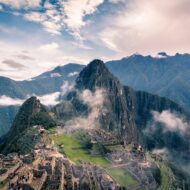
 Peru
Peru
South American giant has over 1.2 million square kilometers of rich landscapes. It's such a true marvel of nature.
Welcome to Peru, such a fascinating country with a rich culture, lovely nature, and historical treasures. The Andes Mountains gets the compliments running through the center of the country where you get the unforgettable scenery and experience advantarous activities. When in Peru, stepping into the world-famous archaeological sites, such as Machu Picchu and the Nazca Lines. Many tourists prefer visiting Peru’s attractions.
The country offers a delicious cuisine. It’s a fusion of indigenous and Spanish influences. The economy of Peru is diversified. From mining to agriculture, there are major sectors contributing to Peru’s economy.
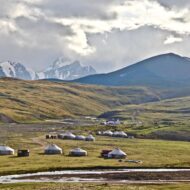
 Mongolia
Mongolia
Vast expanses of steppes, majestic mountains, and deserts cover over 1.5 million square kilometers. This magnificent country, Mongolia is a nomad's paradise.
Whether you have a tent with you in addition to a backpack or be a traveler with a van moving around, Mongolia is landlocked with vast and rugged landscapes that are just right for a nomadic culture and unique wildlife. Gobi Desert, Lake Khovsgol, and how can we forget the ancient city of Karakorum? There are many attractions you can recognize.
If we’re going to talk about the economy, it’s mainly based on nşning, particularly copper and coal. Agriculture and tourism are likewise emerging industries. However, it doesn’t change the fact that Mongolia faces economic challenges, and as a result, there’s inflation and a high poverty rate.

 Iran
Iran
Iran covers over 1.6 million square kilometers, boasting a rich cultural heritage, stunning landscapes, and modern cities.
Historical architecture scene, ancient city of Persepolis facinate and show the historical richness of Iran. From the Imam Reza Shrine and the Naqsh-e Jahan SquareSome and its major cities are Tehran, Isfahan, and Mashhad; Iran has a lot to offer.
The economy, on the other hand, doesn’t depend on tourism, but it’s based on the oil and gas industry. So, Iran’s significant portion of GDP depends on these sectors. There are other dominant industries as well, like mining, agriculture, and manufacturing.
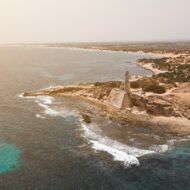
 Libya
Libya
Libya covers over 1.7 million square kilometers, the North African gem offers breathtaking landscapes, ancient ruins, and a rich cultural tapestry.
Libya also has antient city that’s called Leptis Magna, a significant archaeological site. Of course, the famous Sahara Desert offers breathtaking views and opportunities as well. The Roman ruins in Libya are situated at Sabraha and attract history enthusiasts.
Libya’s cities, such as Tripoli, Benghazi, and Misrata, are not only important cultural and economic hubs but also have growing tourism industries.
The country’s economy is highly reliant on its oil exports. However, it’s vulnerable to market fluctuations and other external factors.
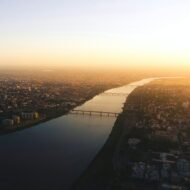
 Sudan
Sudan
Sudan encompasses over 1.8 million square kilometers. This African country boasts amazing landscapes, ancient ruins, and diverse traditions waiting to be explored.
With attractions such as the ancient city of Meroe, the Red Sea, and the Dinder National Park, Sudan welcomes visitors numerous experiences. Khartoum, Port Sudan, and Nyala are economic hubs of this country.
Sudan’s economy is largely based on agriculture, with crops such as cotton, sorghum, and sesame being the primary exports. Also it has significant oil reserves, but its production has been negatively impacted by conflict and sanctions. Nevertheless, Sudan also faces other economic challenges. As a results, there’s inflation and a high poverty rate in this country.

 Indonesia
Indonesia
There are over 17,000 islands in Indonesia and all covers 1.9 million square kilometers. It's an interesting and fascinating country offering landscapes to discover, the unique culture, and a modern society as well.
Indonesia is an archipelagic country. When we’re talking about this country, it’s a must to mention beautiful beaches, a rich culture, and unique wildlife. Bali, Borobudur, and Komodo Island are some of the well-known attractions in the country. Jakarta, Surabaya, and Bandung are some of the famous Indonesian cities.
Indonesia’s economy is diverse, with agriculture, mining, and manufacturing being the major industries. The country is also a leading exporter of natural resources, including coal, palm oil, and rubber. The tourism industry is also significant. Imagine, Indonesia attracts millions of visitors each year.
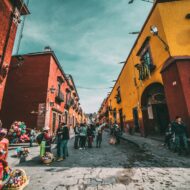
 Mexico
Mexico
Laying on diverse landscapes covering over 1.9 million square kilometers, Mexico swarms with ancient history, colorful cities, and natural wonders waiting to be explored.
Mexico houses numerous beaches, ancient ruins, and delicious cuisine. With world-famous attractions such as Chichen Itza, Tulum, and the beaches of Cancun, Mexico is an often-desired destination for travel and vacation.
Mexico’s economy is the second-largest in Latin America, with industries such as manufacturing, agriculture, and tourism playing major roles. The country is also a leading exporter of oil and gas, and its proximity to the US has made it a prime location for foreign investment. However, income inequality and corruption remain significant challenges.
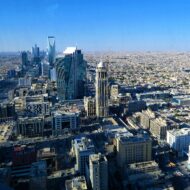
 Saudi Arabia
Saudi Arabia
The country has the largest economy in the Arab world. It’s home to Makkah Royal Clock Tower, the Al-Masjid al-Haram mosque, and the ancient city of Al-Ula. Riyadh, Jeddah, and Dammam are centers for the oil industry.
Saudi Arabia’s economy is heavily reliant on oil exports, accounting for around 90% of its export earnings. However, the country is making efforts to diversify its economy, with initiatives such as Vision 2030 focusing on developing non-oil industries, including tourism and technology. Political and social reforms are also being implemented to support economic growth.
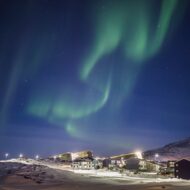
 Greenland
Greenland
Greenland is the world’s largest non-continental island country. It has a small population and mostly fishing-based economy. Its pure natural beauty, glaciers, and unique Inuit culture make the country memorable. It offers amazing once-in-a-lifetime experiences like the Northern Lights, Disko Bay, and the Ilulissat Icefjord.
Greenland’s economy is mostly dependent on fishing, with seafood accounting for over 90% of its export revenue. They’re also looking for potential for mining and hydrocarbon extraction. Despite its vast size, the population of Greenland is relatively small. There are economic challenges as well as faces related to infrastructure and climate change.

 Democratic Republic of the Congo
Democratic Republic of the Congo
As one of the largest countries in the world, Domecratic Republic of the Congo spans over 2.3 million square kilometers is home rainforests, waterfalls, and unique tribal communities.
The country boasts a rich biodiversity, and stunning natural beauty. Also, it’s home to diverse ethnic groups, each with its unique traditions and customs.
The country has long been plagued by conflict and instability, with ongoing issues related to poverty, corruption, and political unrest.
The economy of Congo mostly depends on mineral resources. Also, it’s the country being one of the world’s largest producers of copper and cobalt. Another potential economic opportunity is in agriculture and tourism.

 Algeria
Algeria
Algeria has over 2.3 million square kilometers, and has charming coastlines, snow-capped mountains, and lush oases, in addition to its rich cultural heritage.
Algeria has a mix culture, it’s a blend of Arab and Berber cultures. Visitors of this country can experience an unforgettable range of experiences, discovering the vast Sahara Desert and many other iconic landmarks, such as the ancient Roman ruins at Djemila, the Kasbah of Algiers, and the Tassili n’Ajjer National Park.
Algeria has a mixed economy as well. It heavily relies on its vast reserves of natural gas and oil. It’s also one of the third-largest gas suppliers to Europe. Algeria has also been investing heavily in renewable energy to diversify its energy mix. Algeria also has a burgeoning manufacturing sector. They’re developing particularly in the automotive and electronics industries.
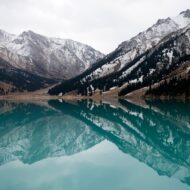
 Kazakhstan
Kazakhstan
Kazakhstan is a massive country having over 2.7 million square kilometers and is known for its diverse culture, booming economy, and impressive infrastructure.
Kazakhstan is famous for Charyn Canyon, Lake Kaindy, and the Kolsai Lakes. Its cities, such as Almaty and Nur-Sultan. They’re modern cultural hubs with impressive business environments.
Kazakhstan has a rapidly growing economy driven by its abundant natural resources. The resources are particularly oil and gas. The country is the largest economy in Central Asia and has attracted significant foreign investment in recent years. Algeria is also working to diversify its economy, with a focus on industries such as mining, agriculture, and technology.
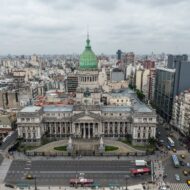
 Argentina
Argentina
At 2.78 million square kilometers, Argentina's vast land area let you explore the breathtaking natural wonders and a rich cultural scene.
Argentina has stunning landscapes and delicious cuisine worth trying. You can visit iconic landmarks such as the Andes Mountains, Iguazu Falls, and Buenos Aires.
When the topic is Argentina, it’s also about tango and gastronomy. A diverse economy comprises major industries in agriculture, mining, and technology. Even though the country experienced recent economic challenges, the highly educated workforce and a growing startup culture make the country position itself as a leader in innovation in the Latin American region.
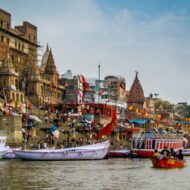
 India
India
India has roughly 3.3 million square kilometers. It's a vast and fascinating country, home to diverse landscapes, different religions, and languages.
India is a culturally rich and diverse country. It’s known for its colorful traditions, breathtaking landscapes, and bustling cities. Taj Mahal, the Golden Temple, and the Red Fort are some of the popular attractions in India. Delhi, Mumbai, and Bangalore are big cities with a growing technology industry. With a population of over 1.3 billion people, the country is the second most populous country in the world. Besides, India is known as a top destination for business, tourism, and spiritual exploration.
Agriculture, services, and manufacturing sectors are important for India’s diverse economy. It’s the world’s sixth-largest economy by nominal GDP and the third-largest by purchasing power parity. The country has made significant progress in economic reforms and liberalization over the past few decades. In addition, India keeps attracting foreign investment and fostering entrepreneurship.

 Australia
Australia
Australia is a vast and beautiful country. It has 7.6 million square kilometers, a diverse wildlife, and a growing economy.
Australia is famous for its stunning natural beauty, unique wildlife, and laid-back culture. The Sydney Opera House and Uluru are some landmarks from the country. There are some infamous Australian beaches you can explore such as the Gold Coast and the Great Barrier Reef. Sydney, Melbourne, and Brisbane are outstanding cultural hubs with delicious food and inspiring arts scenes.
Australia is a welcoming and friendly country. The residents can have a great quality of life and an abundance of opportunities. Australia also has a strong economy and is sustained by mining, agriculture, and technology.
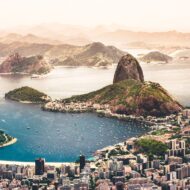
 Brazil
Brazil
Brazil's 8.5 million square kilometers encompass breathtaking landscapes, including the world-renowned Amazon rainforest. Brazil's economy is driven by agriculture, manufacturing, and tourism industries
Brazil is a beautiful country where you can enjoy exploring nature and lively culture. Brazil’s rainforest, Copacabana beach, and the Christ the Redeemer statue capture the attention of visitors. Music enthusiasts can also find many attractions in Rio de Janeiro and São Paulo that have vivid music and art cultures.
Coffee is also an important topic for Brazil as the country is a major producer as well as soybeans, and sugar. So, Brazil has become a global marketplace for these products. With a population of over 211 million people, Brazil is the largest country in South America. It’s also a top destination for business, tourism, and adventure.

 China
China
China has over 9.5 million square kilometers and offers an enchanting mix of ancient traditions. There are metropolises, and awe-inspiring natural wonders.
It’s not a surprise that China is a vast and populous country with a rich cultural heritage spanning over 5,000 years. Many know the Great Wall of China and the Terracotta Warriors. China offers visitors an abundance of cultural and historical attractions.
With a booming economy, technological advancements, and big cities such as Beijing, Shanghai, and Guangzhou, China is also a top destination for business and trade. With a population of over 1.4 billion people, it’s the most populous country in the world and a major player in the global marketplace. In addition, China is the fourth largest country in the world.

 United States
United States
The United States stretches across 3.8 million square miles, as a melting pot of cultures, natural wonders, and economic powerhouses.
The United States of America is the third largest country in the world. Hosting a diverse culture, the US is an influential country with 50 states, each with its own unique culture and attractions. So, we can say that you can make a long plan to discover this country.
From the towering skyscrapers of New York City to the sunny beaches of California, the US offers an unparalleled range of destinations and experiences. Its history is reflected in landmarks such as the White House, the Statue of Liberty, and the Grand Canyon.
The US has a strong economy driven by industries such as technology, finance, and healthcare. It’s also a global leader in innovation and business.
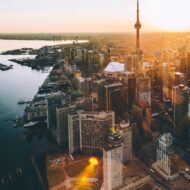
 Canada
Canada
Canada has a land area of 9.98 million square kilometers and it is home to a diverse economy, multicultural society, and natural beauty, making it a must-visit destination for travelers.
Canada is the second largest country in the world. It’s renowned for its natural beauty, multicultural population, and thriving economy. From the Rocky Mountains to the picturesque coastal towns, Canada offers many interesting outdoor activities and fascinating landscapes.
Its cities, such as Toronto, Vancouver, and Montreal, are vibrant cultural hubs with world-class museums, innovation-driven businesses, restaurants, and entertainment venues. Canada has a diverse population and a welcoming attitude. Therefore, Canada becomes a great place to live, work, and visit.
Canada has a highly developed economy. It’s dominated by the service sector, particularly finance, insurance, and real estate. The country is also a major exporter of natural resources including oil, gas, and timber.
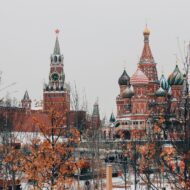
 Russia
Russia
At a staggering 17.1 million square kilometers, Russia is a land of vastness and wonder, filled with unique cultural experiences, picturesque landscapes, and vibrant cities.
Russia is the world’s largest country with a population of over 144 million people. Known for its diverse landscape and iconic landmarks such as Red Square and the Kremlin.
Russia is a resource-rich country with an economy heavily dependent on oil, natural gas, and other commodities. It is one of the largest producers of oil and natural gas in the world. However, Russia faces challenges such as high levels of corruption, an aging infrastructure, and a difficult business climate that can make it challenging for foreign investors. Additionally, sanctions imposed by Western countries in response to Russia’s actions in Ukraine have also had a negative impact on the economy.
The Bottom Line
In this article, we discovered the largest countries in the world by area. They all offer a diverse range of cultures, different shaped landscapes, and various economies. From Saudi Arabia to Indonesia, these countries are home countries for millions of people playing a significant role in the global economy. Each of these countries offers unique and unforgettable experiences for travelers and adventurers.
FAQs
What is the most powerful country for its size?
There are some factors such as military strength, economic influence, cultural impact. At the same time, more are taken into account when it comes to measuring a country's power.
Singapore frequently comes to mind. Despite its small land area of only 728.3 km² and population of around 5.7 million, Singapore is considered one of the most powerful countries for its size. The city-state has a highly developed economy and is a hub for international trade and finance. It also has a strong military and maintains close ties with other powerful countries in the region, such as the United States and China.
What are some facts about the largest country in the world?
Russia is the largest country in the world by land area. It covers a vast territory of 17,098,242 km². Here are some interesting facts about Russia:
- Russia spans 11 time zones and stretches across two continents, Asia and Europe.
- The country has a population of over 144 million people, making it the ninth most populous country in the world.
- Russia is home to some of the world's most iconic landmarks, such as the Kremlin in Moscow, the Red Square, and the Hermitage Museum in Saint Petersburg.
- The Trans-Siberian Railway, which is the longest railway line in the world, runs through Russia, covering a distance of 9,288 kilometers (5,772 miles).
- Russia is also known for its natural wonders, such as Lake Baikal, the deepest and oldest lake in the world, and Mount Elbrus, the highest peak in Europe.
- The country is home to a widely-recognized cultural heritage that contributed significantly to literature, music, and art.
- Russia is a major global power and is a member of the United Nations Security Council, G20, BRICS, and other international organizations.
What country has the most people per square?
The country with the densest population is Macau in China with 21.054 people per square kilometer. Monaco follows Macau with a population density of 19,493 people per square kilometer.
What are the largest countries in the world by area?
The largest 10 countries in the world by area are:
- Russia - 17,098,242 km²
- Canada - 9,984,670 km²
- United States - 9,833,593 km²
- China - 9,596,961 km²
- Brazil - 8,515,767 km²
- Australia - 7,692,024 km²
- India - 3,287,263 km²
- Argentina - 2,780,400 km²
- Kazakhstan - 2,724,900 km²
- Algeria - 2,381,741 km²
Which country has the most land per person?
Greenland is the country has the most land per person with about 38 square kilometers per person.
Which continent has the most countries among the largest countries by area?
Africa contains about 27% of the countries of the world, and 12 of those countries are among the largest countries by area. The largest countries in Africa are:
- Algeria - 2,381,741 km²
- Democratic Republic of the Congo - 2,344,858 km²
- Sudan - 1,861,484 km²
- Libya - 1,759,540 km²
- Chad - 1,284,000 km²
- Niger - 1,267,000 km²
- Angola - 1,246,700 km²
- Mali - 1,240,192 km²
- South Africa - 1,219,090 km²
- Ethiopia - 1,104,300 km²
- Mauritania - 1,030,700 km²
- Egypt - 1,001,456 km²
How does the population of the largest countries compare to their size?
Population density is the measure of the number of people per unit area, typically expressed as people per square kilometer. It is calculated by dividing the population of a country by its land area.
Here are some examples of the population density of the largest countries in the world:
- Russia: With a land area of 17.1 million square kilometers and a population of approximately 146 million, Russia has a population density of about 8.5 people per square kilometer.
- Canada: With a land area of 9.9 million square kilometers and a population of approximately 38 million, Canada has a population density of about 3.8 people per square kilometer.
- China: With a land area of 9.6 million square kilometers and a population of approximately 1.4 billion, China has a population density of about 146 people per square kilometer.
- United States: With a land area of 9.8 million square kilometers and a population of approximately 332 million, the United States has a population density of about 34 people per square kilometer.
What are some of the challenges facing the largest countries?
One of the biggest challenges for many of these countries is maintaining economic growth while addressing issues such as income inequality, environmental sustainability, and political instability. In some cases, rapid population growth can strain resources and exacerbate social and economic inequality.
Another major challenge for many large countries is managing cultural diversity and promoting social cohesion. With diverse populations and multiple languages, cultures, and religions, these nations must balance the needs and interests of different groups while promoting a shared sense of national identity.
Geopolitical tensions and conflicts can also be a major challenge for large countries, particularly those with significant military power and strategic importance. Maintaining international relations, promoting peace and stability, and managing competing interests can be difficult, especially in regions with longstanding conflicts and geopolitical tensions.
Finally, rapid technological advancements and shifting global trends can also pose challenges for large countries. The pace of change can be difficult to manage, requiring governments to adapt quickly to new technologies and changing market conditions to stay competitive in the global economy.

 Peru
Peru Mongolia
Mongolia Iran
Iran Libya
Libya Sudan
Sudan Indonesia
Indonesia Mexico
Mexico Saudi Arabia
Saudi Arabia Greenland
Greenland Democratic Republic of the Congo
Democratic Republic of the Congo Algeria
Algeria Kazakhstan
Kazakhstan Argentina
Argentina India
India Australia
Australia Brazil
Brazil China
China United States
United States Canada
Canada Russia
Russia